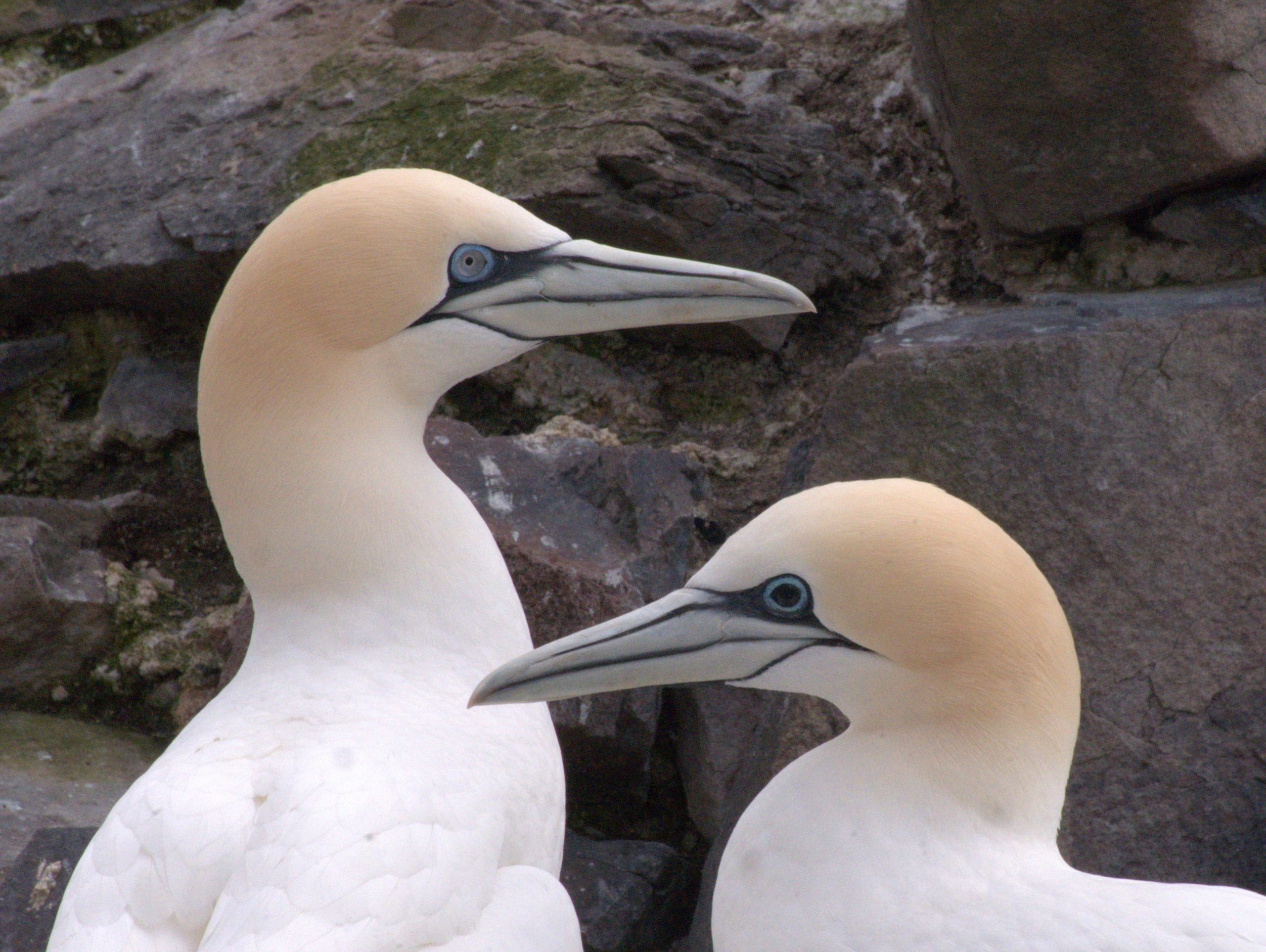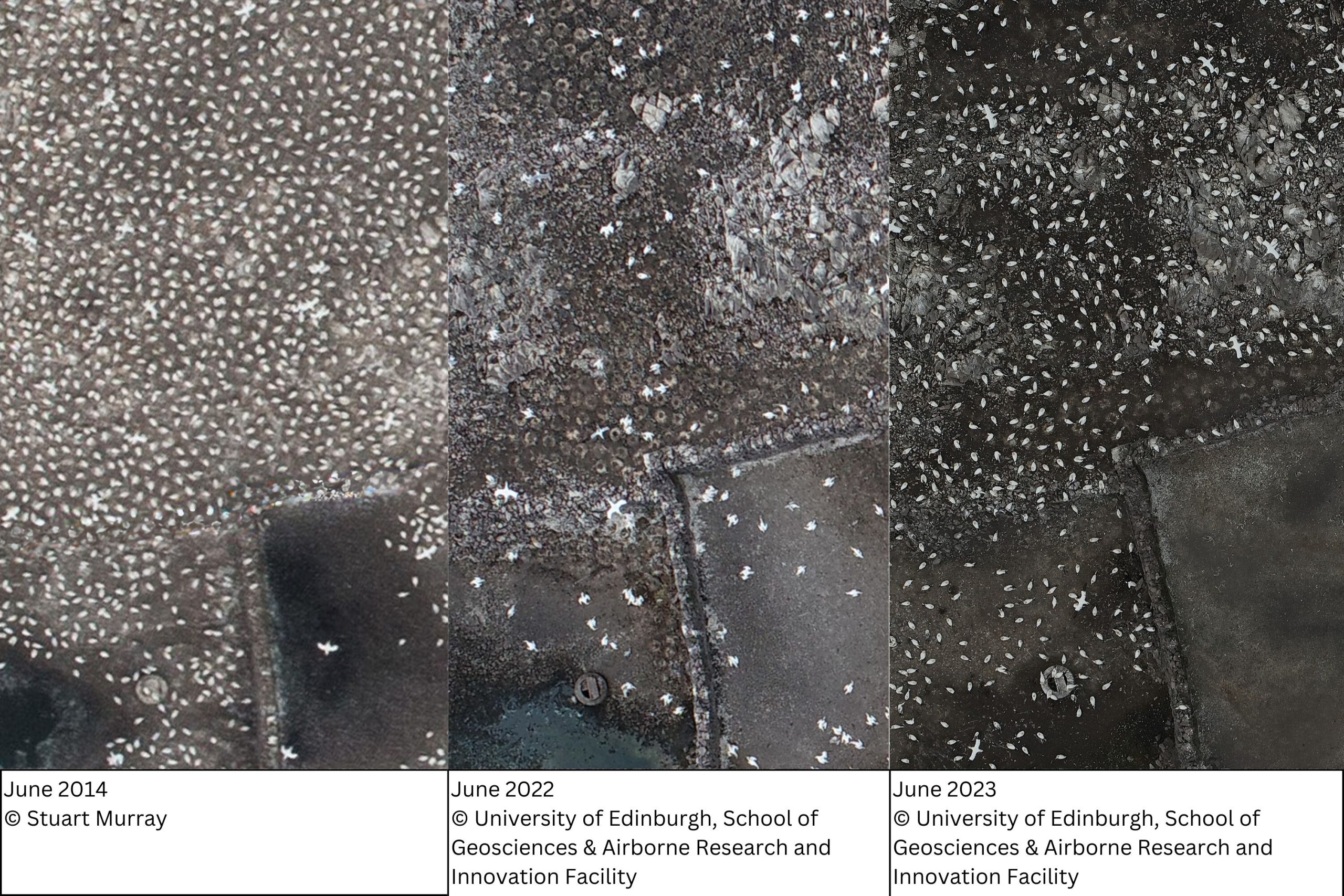
The largest gannet colony in the world at Bass rock has shrunk by 30%
The largest gannet colony in the world has shrunk by 30% since 2014, research has revealed.
The Bass Rock colony was hit by avian flu in June last year, at the height of the gannet breeding season.
The colony was devastated by the disease, with thousands of seabirds dying on the island, resulting in an extremely disrupted breeding season.
A colony count undertaken in June this year indicates that the size of the gannet population has decreased from 75,000 sites to around 55,000 sites.

Gannet showing black eye indicating exposure to Avian Flu April 2023 © Emily Burton, Scottish Seabird Centre
A ‘site’ in the colony is an area occupied by a single bird or pair.
Using imagery from a state-of-the-art drone, combined with traditional seabird counting methods, the Scottish Seabird Centre found the colony has reduced by 25-30% since the last major count in 2014.
The latest findings were a result of a partnership between the Scottish Seabird Centre, The University of Edinburgh’s School of Geosciences, and the UK Centre for Ecology & Hydrology.
Despite this significant and concerning decline, the 2023 breeding season has shown some hopeful signs of recovery, with no evidence of widespread mortality this summer.
Professor Mike Harris and Professor Sarah Wanless, Fellows at the UK Centre for Ecology & Hydrology, said: ‘Until the outbreak of Avian Flu in 2022 the Bass Rock colony had increased relentlessly for more than a hundred years becoming the world’s largest gannet colony in 2014.

Bass Rock gannet colony – June 2014 ©Stuart Murray, June 2022 and June 2023 © School of Geosciences & Airborne Research and Innovation Facility, University of Edinburgh
‘Over this period counting methods have improved dramatically but the development of new technologies couldn’t have come at a better time and will give us the best chance of documenting how the gannets respond to the unprecedented impacts of Avian Flu.
‘We were devastated to see the impacts of Avian Flu on the Bass Rock colony during the 2022 breeding season.’
‘While it has been reassuring to see signs that the colony is starting to recover, Avian Flu remains a significant concern.’
Read more stories on Scottish Field’s wildlife and conservation pages.
Plus, don’t miss the November issue of Scottish Field magazine.
TAGS

